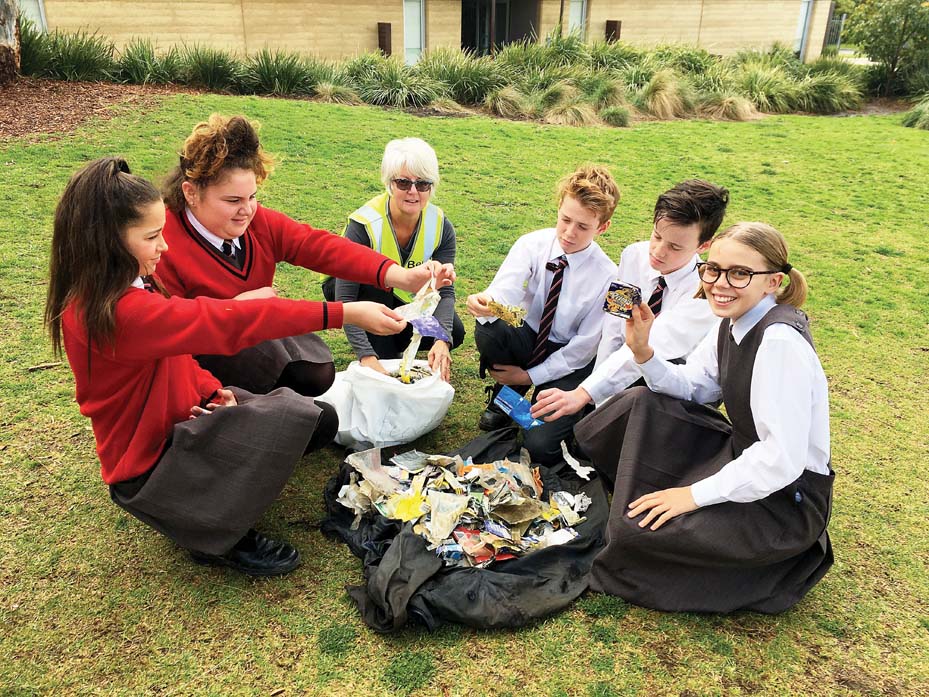
By Barry Morris
LITTER from across Port Phillip as far away as Stonnington, Yarra and Boroondara local government areas and the suburb of Parkdale is ending up in Balcombe Estuary, a survey has found.
Forty year 6 Balcombe Grammar students, with the help of their teachers and Balcombe Estuary Reserve Group Mt Martha, conducted the litter survey at the end of Henley Av, Mt Martha, in the estuary’s south-eastern corner.
They found rubbish thickly covered the ground and in 30 minutes, from a 100 square metre area, collected litter, including small bits that can be swallowed by fish.
They then emptied it on to a tarpaulin before sorting it into recyclables and non-recyclables.
Much of the soft plastics and plastic bags were so dirty they could not be recycled.
Recyclables included glass, plastic bottles, bottle tops, drink cans and paper.
Non-recyclables for landfill included straws, balls, fishing tackle, cigarette lighters, five syringes, polystyrene, rope, polystyrene and bits of plastic.
BERG MM schools program coordinator Jenny Selby said the environment group was keen to raise the awareness of a younger generation to pollution and rubbish issues.
“A number of students had already seen the ABC’s War on Waste program and, after our community viewing, the school also prepared them by showing the film, A Plastic Ocean, which highlights the dire amount of plastic floating in our oceans,” Ms Selby said.
“We want to highlight the quality of water in what we generally think is a clean bay that they enjoy and swim in during summer.
“They probably rarely see any floating rubbish, although they may be aware of it along the beach, on the sand above the high tide mark.” Before going to the estuary, the students were told about a gross pollutant trap installed by Mornington Peninsula Shire on the stormwater drain before the outlet.
Its purpose is to collect larger material before flowing into the estuary.
Even though the drain is emptied regularly, silt and fine particles still get through.
There are traps on other stormwater drains that empty into the creek, including at the end of Mirang Av and on Hopetoun Creek drain where it passes between Ferrero ovals.
“We want them to realise that most of the rubbish collected came in from the sea or bay and was deposited at high tide when the mouth of the estuary was open,” Ms Selby said.
“We could prove this because the council’s gross pollutant traps would have captured most of the street rubbish. And after a big storm that partly destroyed some of the beach boxes, we found some of their material, such as planks of painted wood, beach buckets and even a surf board scattered round the edges of the estuary.”
Asked how pollution of the waterways could be prevented, eliminating rubbish from our environment, the students came up with several answers.
Don’t drop rubbish, recycle, stop using single-use shopping bags and use alternative reusable, long-life bags or, better still, wrap in paper or carry home in baskets.
The most important of the students’ messages – we don’t need to buy as many throwaway items in the first place.
One student told the litter gatherers that he found a cigarette lighter in a snapper he had caught in the bay.